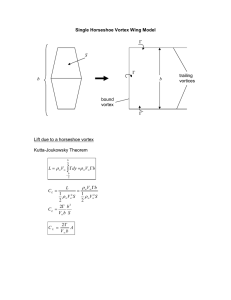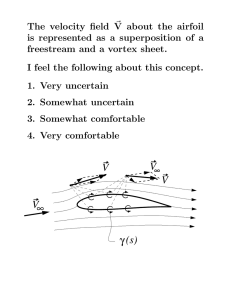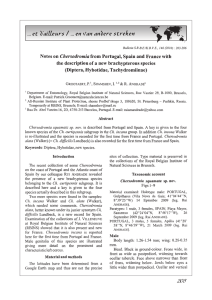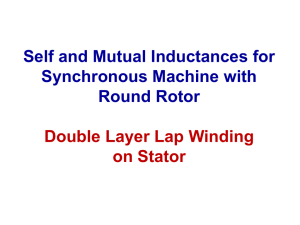Prandtl’s Lifting Line Introduction Assumptions:
advertisement
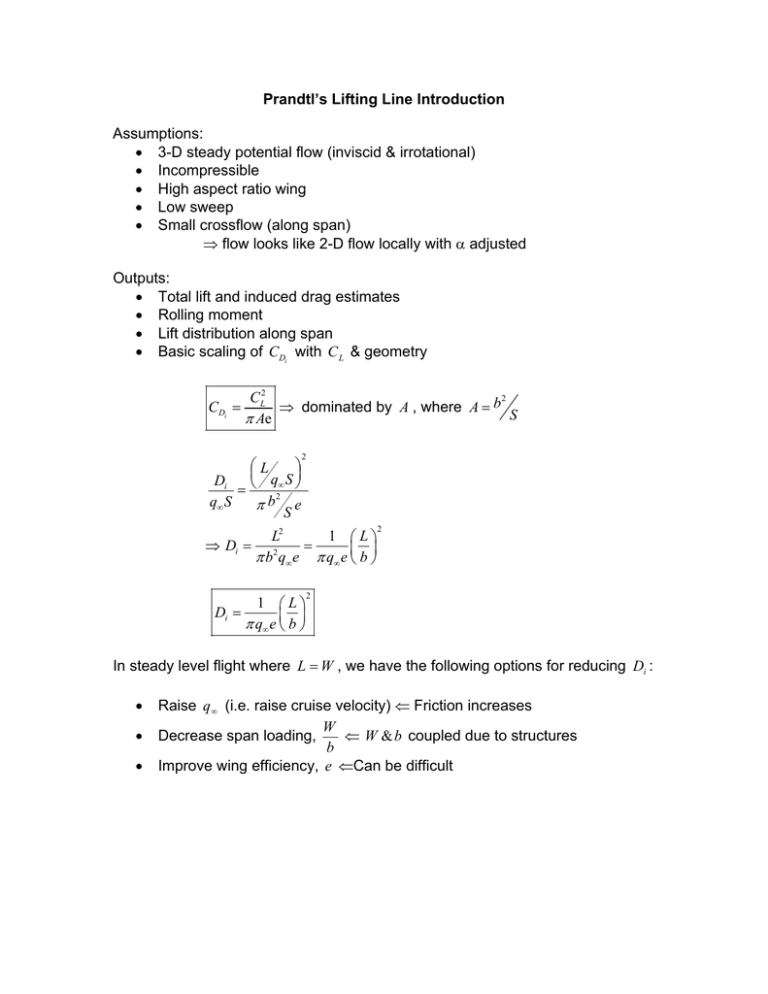
Prandtl’s Lifting Line Introduction Assumptions: • 3-D steady potential flow (inviscid & irrotational) • Incompressible • High aspect ratio wing • Low sweep • Small crossflow (along span) ⇒ flow looks like 2-D flow locally with α adjusted Outputs: • Total lift and induced drag estimates • Rolling moment • Lift distribution along span • Basic scaling of CDi with C L & geometry 2 CL2 ⇒ dominated by A , where A = b CDi = S π Ae L q S Di = 2∞ q∞ S πb Se ⇒ Di = 2 1 L L2 = 2 π b q∞ e π q∞ e b 1 L Di = π q∞ e b 2 2 In steady level flight where L = W , we have the following options for reducing Di : • • • Raise q ∞ (i.e. raise cruise velocity) ⇐ Friction increases W Decrease span loading, ⇐ W & b coupled due to structures b Improve wing efficiency, e ⇐Can be difficult Prandtl’s Lifting Line Introduction Geometry & Basic Definitions for Lifting Line y=-b/2 y=b/2 c(y) y Cl(αeff,y) x • • Chord is variable, c = c( y ) Angle of attack is variable, α = α ( y ) and is a sum of two pieces α ( y) = α N N∞ + α g ( y ) local α • freestream α N geometric twist Effective angle of attack is modified by downwash from trailing vortices α eff ( y ) = α ( y ) − α i ( y) N induced α Note: αi > 0 for downwash • Local lift coefficient linear with α eff Cl = ao ( y )[α eff ( y ) − α LO ( y )] Fundamental Lifting Line Equation Basic model results by: • Assuming Kutta-Joukowsky locally gives L ′ : L′( y ) = ρ ∞V∞ Γ( y ) L′( y ) 2 Γ( y ) ⇒ Cl ( y ) = = q∞ c( y ) V∞ c( y ) 16.100 2002 2 Prandtl’s Lifting Line Introduction Distributing infinitely many horseshoe vortices along wing c -line to model 4 induced flow: y x Γ(x) Cl = ao ( y ) α eff ( y ) − α LO ( y ) = 2 Γ( y ) V∞ c( y ) = ao ( y ) [α ( y ) − α i ( y ) − α LO ( y )] = α ( y) = 2 Γ( y ) V∞ c( y ) 2 Γ( y ) + α LO ( y ) + α i ( y ) ao ( y )V∞ c( y ) where α i ( y ) = − 1 w( y ) = 4πV∞ V∞ b 2 ∫ − b 2 dΓ ( yo )dyo dy y − yo Note: only unknown is Γ( y ) ! We use a Fourier series to solve this. N b Γ = 2bV∞ ∑ An sin nθ where y = − cos θ 2 n =1 Thus, the governing equation is: α (θ ) = N N 4b sin nθ A n nAn θ + α θ + sin ( ) ∑ ∑ n LO ao (θ )c(θ ) n =1 θ sin n =1 αi (θ ) 16.100 2002 3
